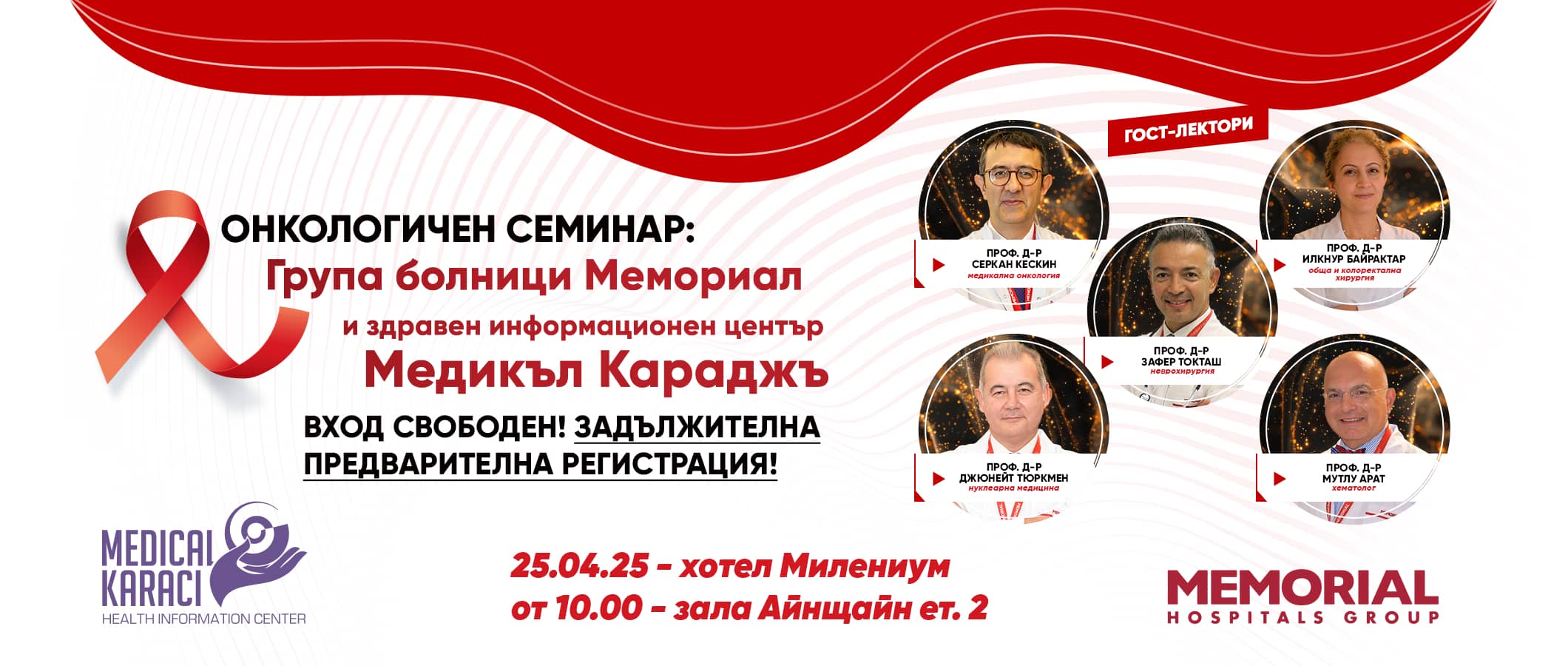BRCA1, BRCA2 and TP53
BRCA1, BRCA2 and TP53 are the names of genes whose mutations are responsible for the development of malignant tumours. The normal variants of these genes in each of us are involved in controlling cell division and repairing errors that occur in DNA.
If we inherit non-functional variants of these genes from our parents, the chance of developing hereditary cancer increases.
Cancer BRCA1/2 carriage testing has an extremely important role in clinical practice. Mutations in these genes are most commonly associated with breast and ovarian cancer. However they are also relevant to prostate cancer, and malignant cutaneous melanoma. For mutations in BRCA1, the risk of developing breast cancer is 60- 90 %, and for ovarian cancer 40- 60 %.
BRCA2 mutations increase the risk of developing breast cancer to 45- 85 % and ovarian cancer to 10- 30 %. About 15- 20 % of breast cancer cases and 5 % of ovarian cancer cases have a familial genetic predisposition. About 15 % of these cases are due to carrying mutation variants of the BRCA1 and BRCA2 genes. BRCA-positive breast and ovarian cancer has an aggressive course and must be treated quickly and accurately. Early prevention can prevent tumours from forming in other organs and systems - prostate, pancreatic and skin cancer (melanoma).
p53
Another protein that is relied upon in the diagnosis of various cancers is p53. It is responsible for "sounding the alarm" when tumor cells are present in the body. A mutation of the TP53 gene is found in Li-Fraumenie syndrome, a rare genetic disorder that can increase the risk of certain cancers. TP53 gene mutations produce mutant p53 proteins. These cancers include breast cancer, bone cancer, leukaemia and soft tissue cancers, also called sarcomas. Almost every person has a gene containing p53 in their genome. The protein has a variable structure because, in addition to the normal (protective) part, it can also contain a mutant particle that can increase the tumor process. This is why, in combination with other genetic analyses, it is good to add a TP53 analysis.
An analysis of the type of protein present in the TP53 gene determines whether a particular individual contains a "wild type" protein. It is responsible for the suppression of cancerous processes, or has a mutant type. This protein is oncogenic and increases the risk of developing the disease. For example, human papillomavirus (HPV) can increase the risk of cervical cancer in women by interfering with the activity of p53. This and similar findings of p53 mutations highlight the fact that DNA mutations that can lead to cancer are extremely common. If p53 and some other tumor suppressors did not have them in the human body, cancer would be extremely common.
When is combined BRCA1, BRCA2 and TP53 testing recommended?
- In any case of breast cancer detected before the age of 50. Given the young age of onset, a genetic predisposition is suggested.
- The availability of research results can provide much greater clarity on the treatment pathway.
- In any case of ovarian cancer.
- At diagnosis of triple negative breast cancer (ER- / P- / HER2-) and with particular importance before the age of 60 years.
- In the presence of a combination of two types of tumors - pancreatic cancer and/or prostate cancer and/or ovarian cancer.
- Having two or more close relatives with breast cancer, with at least one under 50.
- Cancerous BRCA1 and BRCA2 or TP53 mutant variants found in the family.
How is the research done?
A blood sample is taken, then sent for analysis. The most common method of testing is by next-generation genomic sequencing, which is 100 % accurate. Results take about 3-5 weeks to be ready, depending on the laboratory.
How can the result influence the choice of treatment?
The type of tumour along with a mutation found in some of the genes gives important information to medical oncologists. This will guide them in selecting the best treatment.
If breast cancer is diagnosed at a young age, and if any of the genes are mutated, a total mastectomy may be recommended given the risk of recurrence. Another guideline used by research is the prescription of a certain type of chemotherapy, immunotherapy or targeted therapy. Often the importance of these investigations is overlooked in diagnosis and treatment, without realising how important guidance the results can provide. Combinations of treatments for the above cancer types are usually protocols known worldwide. The presence of a gene mutation could allow a slight modification or addition of another type of therapy to the main treatment. This possibility would make the treatment optimal, eliminating repeated instances of trial-and-error treatment.



